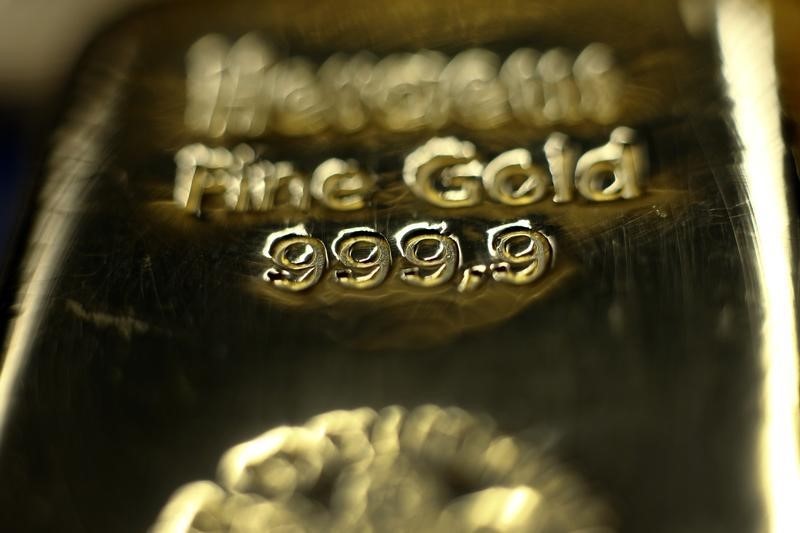Investing.com - Gold prices fell below the $1,200-level on Tuesday, one day after rallying to the highest level in nearly five-weeks as a broadly stronger U.S. dollar weighed.
On the Comex division of the New York Mercantile Exchange, gold futures for February delivery fell by as much as 1.7% to touch a daily low of $1,196.90 a troy ounce, before trading at $1,198.40 during European morning hours, down $19.70, or 1.62%.
A day earlier, Comex gold prices fell by as much as 2.86% to $1,141.70 an ounce, the weakest level since November 7, before rallying to settle at a five-week high of $1,218.10, up $42.60, or 3.62%.
Futures were likely to find support at $1,141.70, the low from December 1, and resistance at $1,221.00, the high from December 1.
Also on the Comex, silver futures for March delivery tumbled 49.9 cents, or 2.99%, to trade at $16.19 a troy ounce.
Prices hit $14.42 on Monday, a level not seen since August 2009, before turning higher to end at $16.69, up $1.13, or 7.3%.
The US dollar index, which tracks the greenback against a basket of six major rivals, was up 0.21% on the day to trade at 88.23, not far from a four-year peak of 88.52 scaled a week ago.
A stronger U.S. dollar usually weighs on gold, as it dampens the metal's appeal as an alternative asset and makes dollar-priced commodities more expensive for holders of other currencies.
Gold prices are likely to remain vulnerable to further losses in the near-term amid indications a strengthening U.S. economic recovery will force the Federal Reserve to start raising interest rates sooner and faster than previously thought.
Expectations of higher borrowing rates going forward is considered bearish for gold, as the precious metal struggles to compete with yield-bearing assets when rates are on the rise.
Elsewhere in metals trading, copper for March delivery slumped 2.7 cents, or 0.94%, to trade at $2.871 a pound, amid ongoing concerns over the health of China's economy.
A pair of reports on Chinese November factory activity released Monday provided more evidence of a slowdown in the world's second largest economy.
The Asian nation is the world’s largest copper consumer, accounting for almost 40% of world consumption last year.
